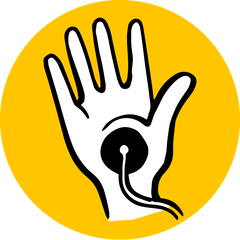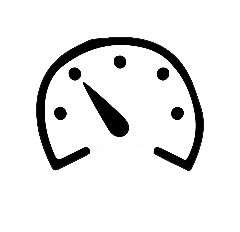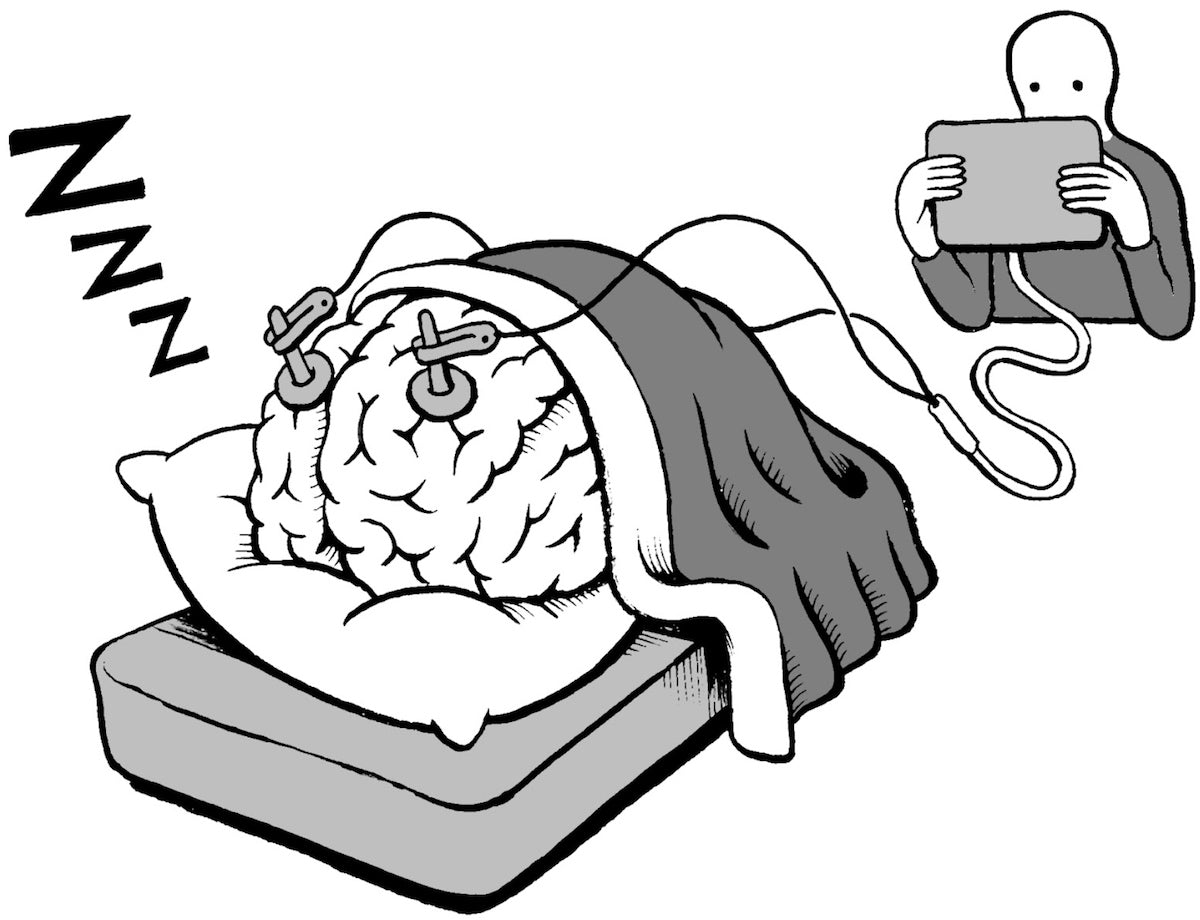
Electroencephalography (EEG): Recording Brain Waves During Sleep

“To sleep, perchance to dream.” — W. Shakespeare
Poets and scientists alike have long wondered about this mysterious state that plays such a profound role in our lives and health. In this experiment you’ll learn current theories on why we sleep and record the large electrical waves that sweep the frontal cortex while you nap. This protocol was created by Joud Mar’i, an undergraduate at Mount Holyoke College, during our Summer Fellowship Program.
About the Experiment
What Will You Learn?
- How the brain cycles through N1, N2, N3 and REM sleep, each with its own electrical signature.
- How to record and analyse EEG signals from the frontal cortex during sleep.
- How to recognise delta waves, sleep spindles, K-complexes and the unique signature of REM sleep.
- A hands-on opportunity to nap while capturing real-time brain activity.
Background
Sleep is still one of biology’s great mysteries. Modern theories suggest it protects us, conserves energy, repairs the body and strengthens learning by consolidating memories.
During sleep the brain does not switch off; it cycles through distinct stages:
- N1 (Stage 1) — light sleep, as alpha waves (8–13 Hz) give way to theta waves (4–7 Hz).
- N2 (Stage 2) — marked by sleep spindles (12–14 Hz) and K-complexes.
- N3 (Stage 3) — deep or slow-wave sleep dominated by delta waves (0.5–3 Hz).
- REM — vivid dreaming, rapid eye movements and an EEG that looks almost awake.
This experiment shows you how to set up a frontal EEG recording, take a short nap and relate the signals you see to these theories of sleep.
What You Need
Materials
- Heart & Brain SpikerBox or Human SpikerBox
- BYB EEG headband with metal electrodes and a ground patch
- Conductive electrode gel
- Orange electrode cable (two red alligator clips for recording, one black clip for ground)
- Laptop, tablet or smartphone running Backyard Brains SpikeRecorder
- Prior experience recording alpha waves is helpful
Procedure
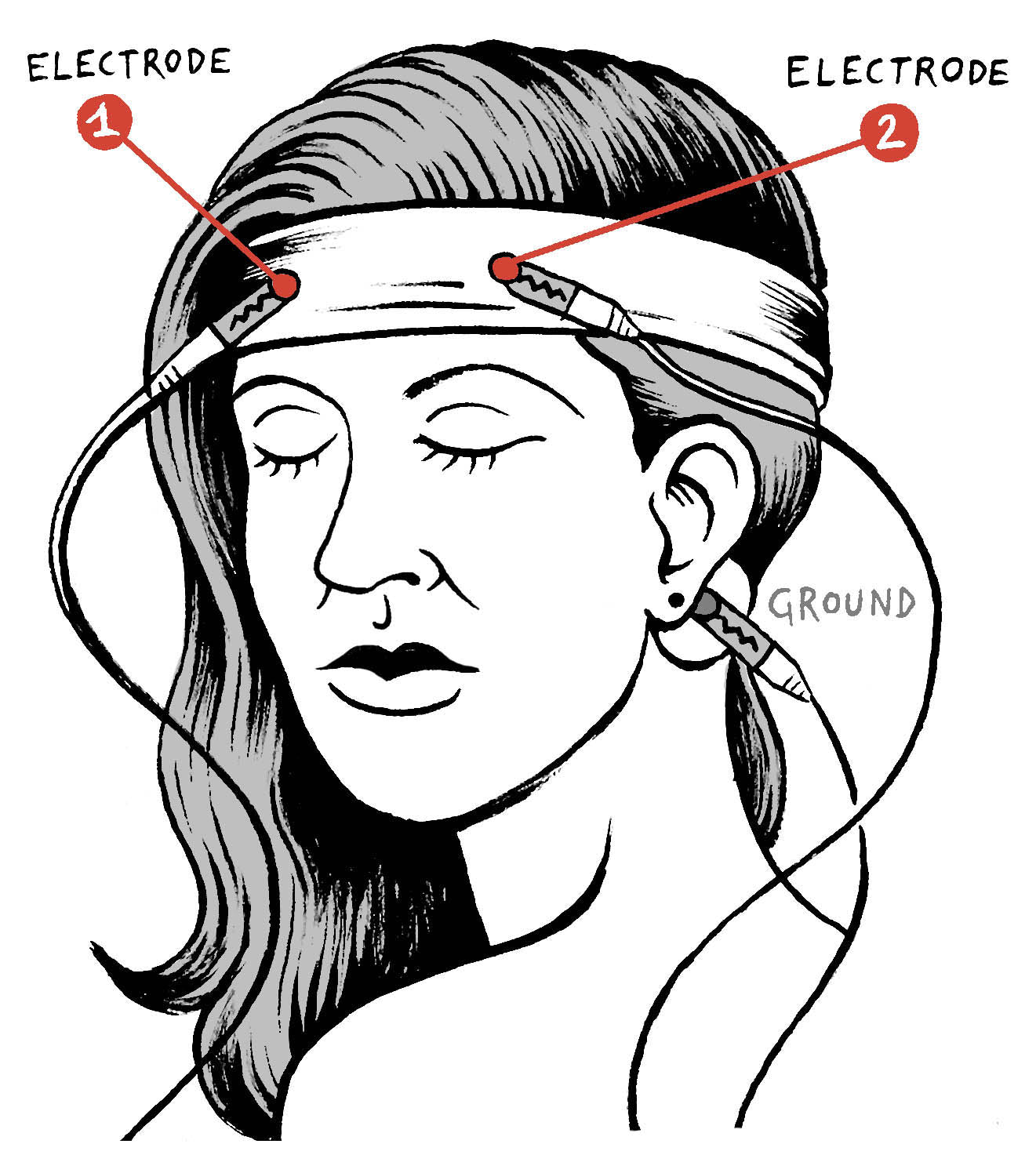
Preparation & Electrode Placement
- Headband setup — place the headband on your forehead; add a dab of gel under each electrode.
- Ground — stick the ground patch on the mastoid (bony ridge behind the ear).
- Cabling — clip the two red leads to the forehead electrodes and the black lead to ground, then plug the orange cable into the SpikerBox.
- Signal check — launch SpikeRecorder, connect, and position your device away from mains sources to minimise 50/60 Hz noise.
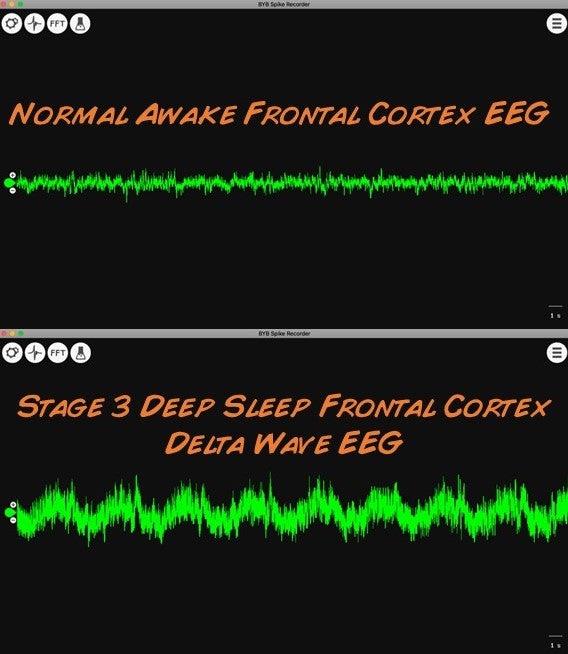
Recording
- Lie down comfortably and keep facial muscles relaxed.
- Start recording in SpikeRecorder.
- Nap for up to 90 minutes (a full cycle), or as long as time allows.
Watch for:
- Delta waves — large, slow waves of N3 sleep.
- Sleep spindles & K-complexes — brief bursts typical of N2.
- REM artefacts — rapid deflections from eye movements.
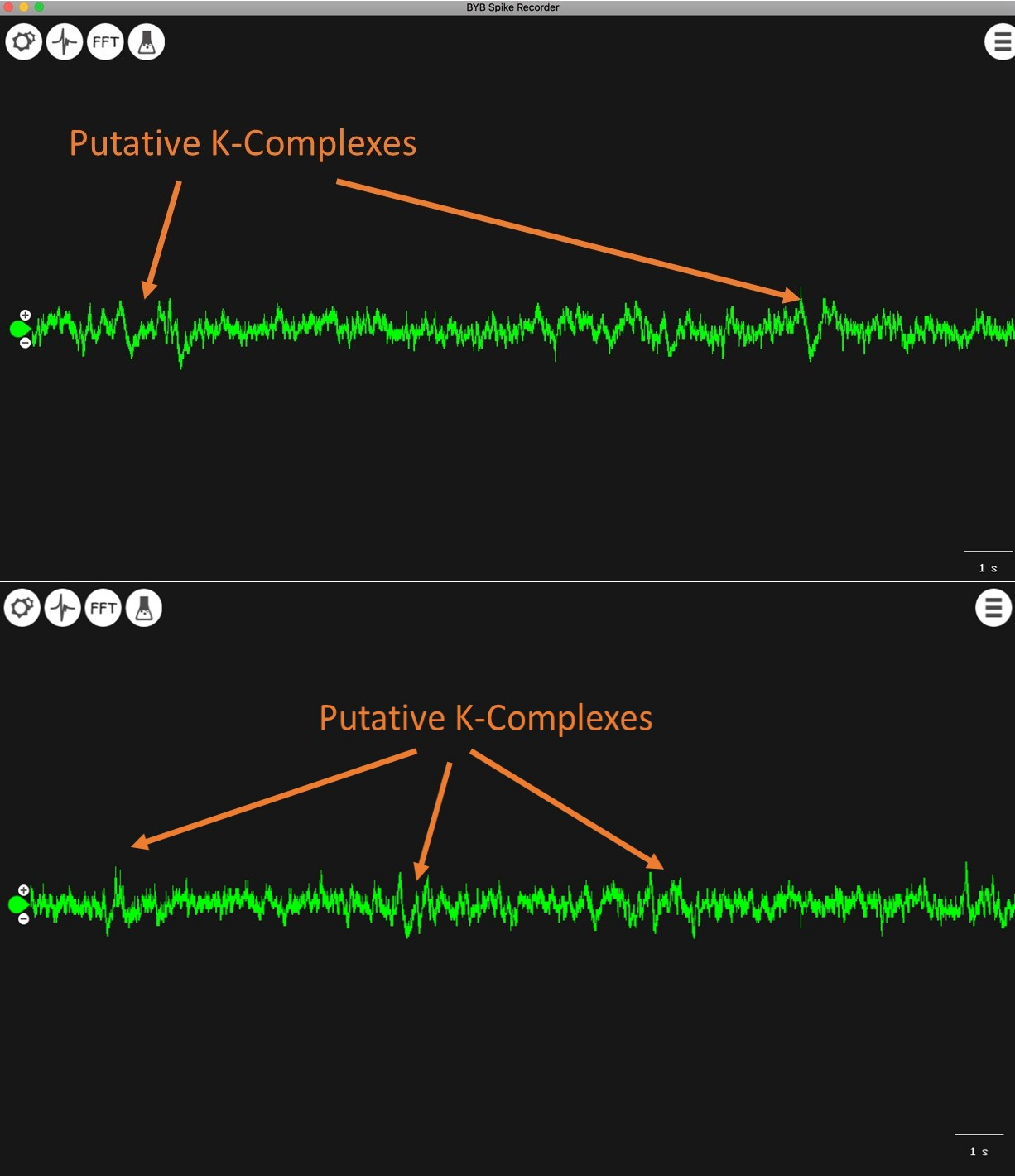
Saving & Analysis
- Tap “Record” to save your session.
- Open the .wav file later in SpikeRecorder and zoom out to 40-second windows to score each sleep stage.
Results & Discussion
Observation
- Mark periods of alpha (awake/relaxed), theta (N1) and delta (N3).
- Identify sleep spindles and K-complexes for N2.
- Note high-frequency activity and eye-movement artefacts in REM.
Interpretation
- Calculate time spent in each stage.
- Relate patterns to theories of protection, energy conservation, repair and memory consolidation.
- Consider how delta-wave strength might signal restorative processes.
Further Questions
- How could you improve the headband for overnight recordings?
- Which noise-reduction strategies worked best?
- Which sleep theory do your results support?
Science-Fair Ideas
- Compare EEG from a nap versus a full night’s sleep.
- Test how caffeine affects sleep stages.
- Record EEG from a pet to compare REM patterns across species.
References & Reading
- While You Sleep — Joud Mar’i (Summer Fellowship Program)
- H. Nicholls, Sleepy Head
- NIH Guide to Healthy Sleep
- Society for Neuroscience, Brain Facts
- Smithsonian Magazine: Origins of sleep science (Kleitman, Aserinsky, Dement)
